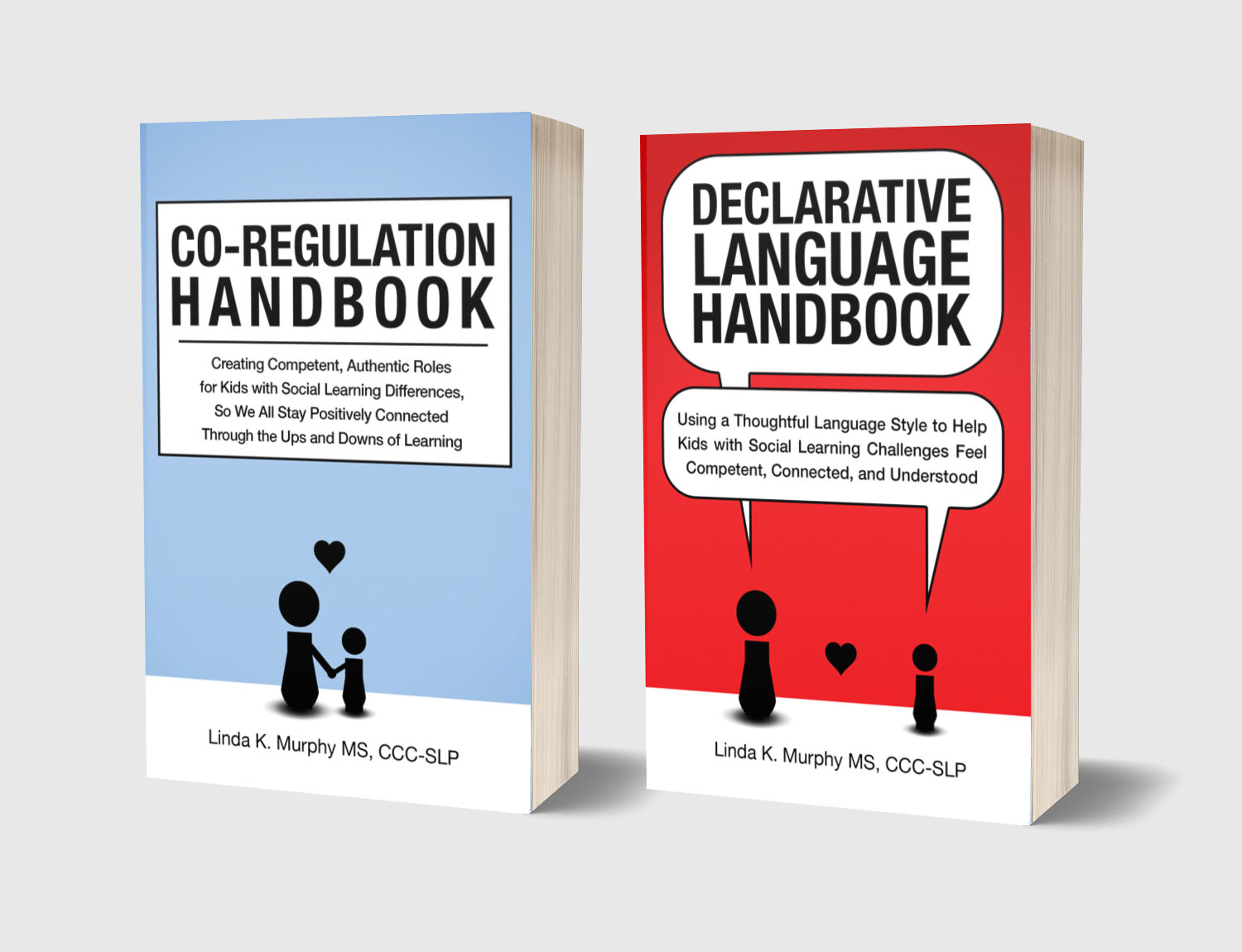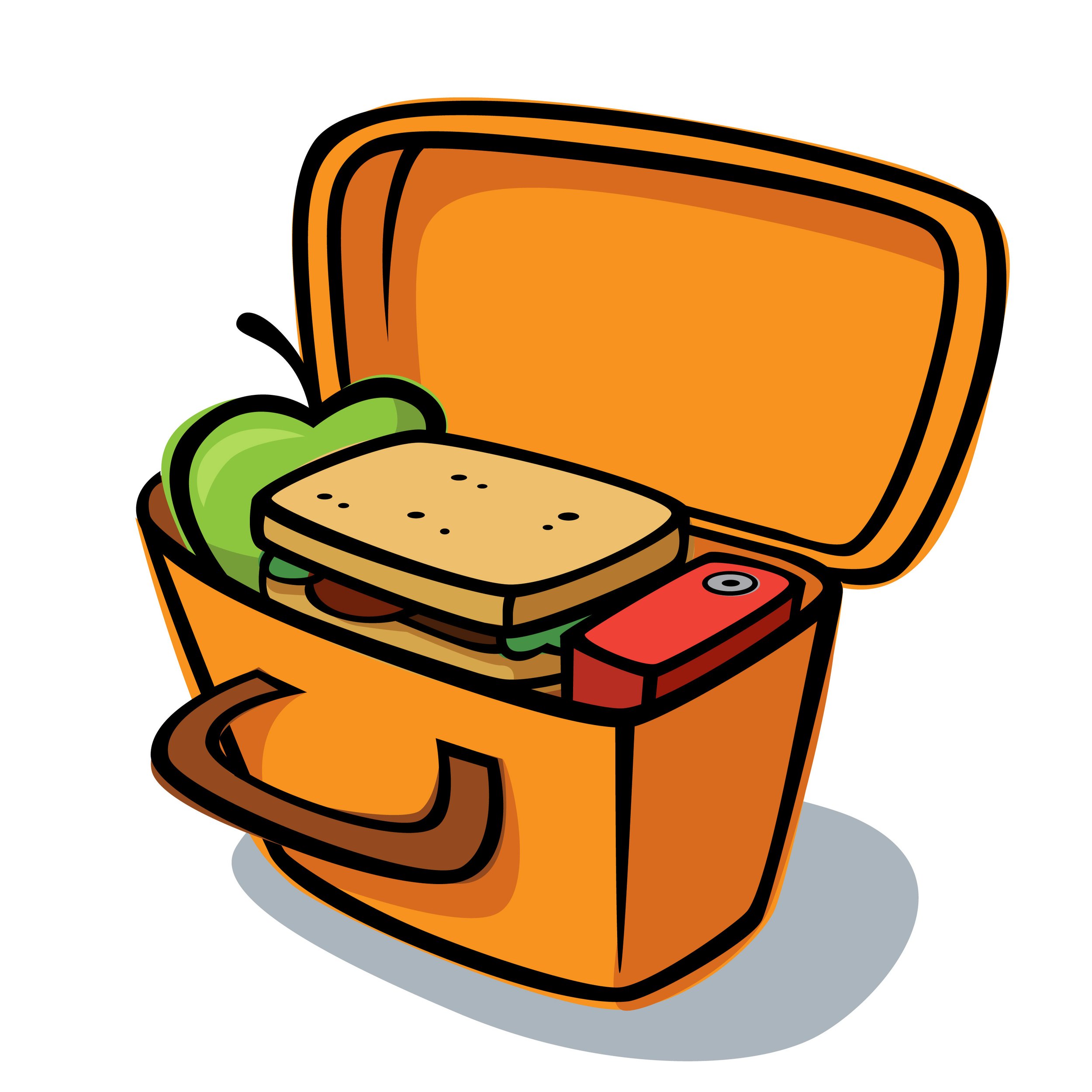Adjusting Your Level of Support
Declarative language is dynamic, and even more so when partnered with co-regulation. We can use these tools with all learners, regardless of whether they think and speak abstractly, are more concrete learners, or they prefer more direct language. And, there are many reasons to do so, as I talked about a couple of weeks ago, here.
As I discussed in that post, there are different ways to speak declaratively, and provide scaffolds, so that we always give our learner what they need, in each moment.
This week, I want to provide many examples related to one routine, so you get a feel for how to adjust your language for different learners and different moments. Importantly, you can include your learner in a routine no matter their age, and no matter their developmental level. The critical element is finding a competent role.
I’m not sure why, but has been hard for me to pick one context in which to provide you examples! Probably because each situation and each learner is so unique, and dynamic. It all comes down to being present to our learners in each moment, as we give and receive communication. I want to guide you on how to adjust your communication, but I also want you to remember it is not a static script or prompting hierarchy. The feedback loop with your learner is critical, and only you are there, in that moment, to decide what is best.
So … I’ve decided to use an example from my real life: Teaching my younger son how to make his lunch for school.
Two years ago, he adamantly protested when I invited him to join this process.
It was important for me to first understand where his NO was coming from: He didn’t like getting ingredients on his hands and the fine motor elements were fatiguing to him.
Once I understood this, I could better establish co-regulation (or define competent-authentic-contingent roles), invite him to join along the way, and model the overall process using declarative language.
Then, as I met him where he was at, each day and in each moment, his competence grew.
Here is how this process unfolded for us, from greatest amount of support (which was needed at the beginning), to the least (which is where we are at now, most days!).
Situation 1: We are starting something new and my learner needs me the most.
Use statements that offer partnership and emotional connection, identify competent-authentic-contingent roles in the moment, and model the routine.
Examples:
Let’s think through what you want to bring for lunch. I remember you usually like peanut butter and jelly, and an apple. I’m wondering if you want the same thing tomorrow, or something different…
Someday I’d love for you to make your lunch on your own, but today I was thinking I could put it all together and you can watch. Then, on a different night, we can give it a try together.
I’d love us to get your lunch ready for school together! I will get the food, and you can put it in your lunchbox.
Let’s make your sandwich together. I will get the bread and peanut butter, and you can get the jelly in the fridge. Then, we can be a team while making it…. You can be the bread placer and I will be the spreader. I remember you don’t always like when jelly gets on your hands!
I took out all the ingredients so we can make your lunch together. I’m thinking you can open the jars, and I will spread the peanut butter and jelly on the bread. Then, we can put the pieces of bread together as a team.
Situation 2: My learner still needs my help, but not as much.
Use statements that are guiding, share an idea directly, and continue to offer partnership and connection.
Examples:
I love how you are making your lunch these days! Now is a great time to make it for tomorrow, before you watch a show. I remember you usually like peanut butter and jelly. I will get the bread for you!
I’m thinking it would be a good idea to make your lunch now, before we forget! I see the bread on the counter. I can get the peanut butter, jelly and a knife for you.
I remember that it really helps us in the morning, when we make your lunch at night. I think now is a great time to do that. I’ll grab your lunchbox!
Situation 3: My learner is assuming most of the responsibility on their own now, but may need help remembering to get started.
Use statements that guide initiation by recalling your shared episodic memories.
Examples:
I remember yesterday you wanted to bring peanut butter & jelly, chips and an apple for lunch. I’m wondering if you’d like that again for tomorrow…
I don’t think you have made your lunch yet, but I remember you usually do it at night.
I remember you usually make your lunch for school after we finish dinner, and before you go to bed.
I remember this is usually a great time to make your lunch. I’m here if you need any help.
Situation 4: My learner can do this routine on their own, but may forget at times.
Use statements to guide inferential thinking and problem solving.
Examples:
I’m wondering if you are all ready for school tomorrow…
I’m wondering if you have all you need for school tomorrow…
I see your backpack is ready, but your lunchbox is empty and still on the counter!
Importantly, I want to emphasize that meeting our learner in each moment means that, at times, we may need to offer more support today than we did yesterday. They may be fatigued, something else may be weighing on their mind, or they may have had a hard day. (This happens to all of us!). In these moments, your competent-authentic-contingent roles might look different than they did the day before, but it may be just right for right now. Know that this is okay, and your in-the-moment response can lay the groundwork for future self-advocacy.
Situation 5: I’m not sure why, but my learner seems to need more support right now than they usually do.
Identify a competent role for them at this moment, and form your partnership from there.
Examples:
I can tell you are tired tonight! How about if you let me know what you want for lunch, and I can make it while you keep me company.
How about if you be the ingredient-getter, and I will put your lunch together. I can tell you are not feeling yourself right now.
I remember you usually are so good at making your lunch! And, I can tell something is getting in the way right now. Let’s work as a team doing it tonight.
Any examples you’d like help thinking through in this way? Send them my way for a future blog post.
I also plan to make a handout with these ideas all on one page - so stay tuned for that!
Have a great week!
Would you like individualized guidance on how to adjust your level of support in a dynamic way?
Join our next 8-Week Virtual Declarative Language Workshop, starting on March 2!
If you are a professional looking to learn about declarative language and co-regulation, while earning CEU’s, I’ll be doing a 6-hour live webinar for Theramoves on March 13, 2023. Details are here!
Want declarative language and co-regulation to become habits in your communication style? Receive these Sunday Snippets of Supports directly to your inbox!









